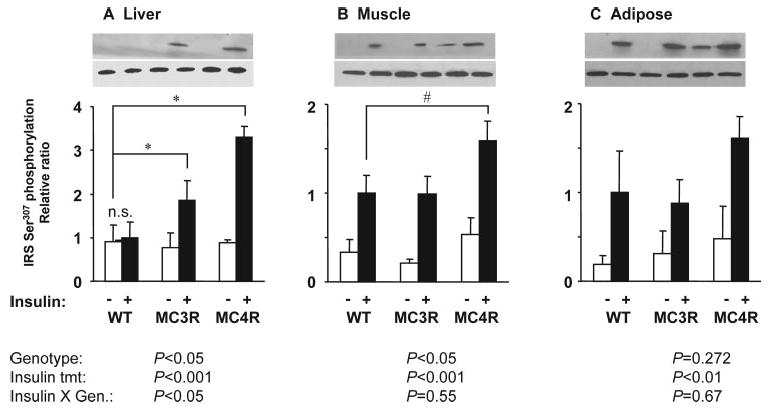Fig. 9.

Increased Ser307 phosphorylation of IRS1 in liver and skeletal muscle of Mc4rKO compared with WT fed a moderately high-fat diet. Representative Western blots, with quantified data (n = 3 per group), are shown for basal and insulin-stimulated IRS1 phosphorylation on Ser307 in liver (A), skeletal muscle (B), and retroperitoneal adipose tissue (C). These samples were from the high-fat diet groups shown in Figs. 6–8. A significant effect of genotype on insulin-stimulated IRS1 Ser307 phosphorylation was observed for Mc4rKO (MC4R) and Mc3rKO (MC3R) compared with WT in liver, and for Mc4rKO compared with WT in skeletal muscle. Significant difference between groups is indicated by lines: *, P < 0.05. Unless indicated otherwise (n.s., not significant), treatment effects of insulin were statistically significant (P < 0.05). Mice were maintained on moderately high-fat diet (45% kJ from fat).
